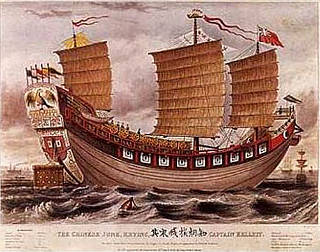[Visionary intelligence: In Japanese martial arts, the fighter fights best when he is in zanshin, a state of complete awareness. Awareness helps to create a variety of strategic options, and enables us to develop and sustain a position of competitive advantage by choosing the best among them. Photograph by PublicDomainPictures under Creative Commons]
As companies grapple with turbulent environments, speed, agility, and adaptability are the keywords that dominate business thinking today. There has been a rush to innovation, because innovation is seen to be the key for companies to create and sustain competitive advantage. In all this, design thinking has emerged as a very popular methodology for businesses to structure innovation so that it becomes contextually grounded and relevant to the market. Almost every business school has courses on design thinking, and within organizations, design thinking has become the way to express and channel creativity.
Although design thinking offers a very potent methodology for innovation, there is an inherent danger in the design thinking methodology that renders it tactical rather than strategic. I want to offer here a few thoughts that can help design thinking become strategic.
The essential flow of design thinking
Design thinking appears in as many flavours as there are practitioners of it. However, we can discern a core that is common to all these versions of design thinking. Essentially, we can conceptualize design thinking as a process that operates in a continuous loop through four key phases—problem definition, option creation, option selection, and execution.
1. Problem definition: This phase of design thinking calls for us to identify and define the problem that needs to be solved. Problem definition in design thinking is centralized around ear-to-the-ground observation of human experience: What is happening in the world around us? What problems need to be solved? How should solutions be structured? By putting observation at the forefront, design thinking calls for us to participate in the world, and so, it replaces traditional market research with anthropological inquiry that uses participant-observer methods to arrive at ethnographic understandings of problem and solution spaces.
2. Option creation: Once the problem had been identified, the design thinking process engages in developing multiple solutions to the problem. This allows the team to think new “unorthodox” solutions, and not fall back on routine or safe solutions that have worked in the past. It is essential to get multiple perspectives on the problem, to involve many people in generating solutions, and to treat every alternative solution as an equally viable candidate.
3. Option selection: The option selection phase examines the various solutions generated in the previous phase. The process in this phase analyses, critiques, and picks the best from among the set of proposed solutions. As is apparent, critical thinking and analytical decision-making are central to this phase of design thinking.
4. Execution: The execution phase of design thinking focuses on implementing the solution that has been picked out as best among the candidate solutions. The phase focuses on modelling, prototyping, and testing out the new idea that has emerged through the process. The lessons learned from implementation or execution feed back to the first phase of a new cycle in design thinking.
Thus, continuous iteration through the four phases makes design thinking a powerful methodology to create successful innovation that is grounded in reality—market requirements and customer expectations.
But it is precisely this iterative, ear-to-the-ground looping, that creates a problem for design thinking. A war tactic derived from the US war in the Korean theatre in the 1950s offers an explanation.
John Boyd and the OODA loop
The ace American pilot, John Boyd, drawing on his experiences during the Korean War, conceptualized the now-famous OODA loop. Boyd concluded that fighter pilots engaged in dogfights go through a loop that comprises four steps—observe, orient, decide and act (OODA)—and the pilot who is able to execute the OODA loop faster is the one who emerges victorious. If you are suspecting that there is a parallel between the OODA loop and the four-phase iterative loop of the design thinking process, then you are not far off. In fact, you are remarkably close because the four phases of design thinking that I described earlier are uncannily the same as the four steps of the OODA loop.
How does the OODA loop apply to business settings? Keith Hammonds observed in an article in Fast Company, “In business, success isn’t simply a matter of being quickest to market, of spending the most, or of selling the highest-quality products. You can win by using any of those methods but only if you do one thing more: Outmanoeuvre the other guy. You have to decode the environment before he does, act decisively, and then capitalize on his initial confusion by confusing him some more.”
Hammonds’s view of what the OODA loop means and how it works is the common perception about the OODA loop—go through the four phases of the loop faster than your opponent, and you will win. The OODA loop, as Boyd himself recognized, is short-term, tactical. There is nothing strategic about it. In fact, when he initially presented the theory in military circles, Boyd discussed the example of the German Blitzkrieg in the Second World War. Using light Panzer tanks and a rapidly moving army, the Germans overcame a more formidable French opposition. The Germans may have overrun France quickly in 1940 using elements of the OODA loop, but we all know who finally won the war in 1945. Design thinking, like the OODA loop, is fraught with the danger that the methodology can yield short-sighted responses that are purely responsive to market forces. In such settings, innovation becomes tactical, not strategic; incremental, not game-changing.
How to make design thinking strategic
For design thinking to succeed in the long run, it must become consciously strategic. It can do this by developing what I have elsewhere called ‘visionary intelligence’—the ability to think beyond the present set of circumstances, to think beyond parochial self-interest and bottom lines. Visionary intelligence allows us to think both about the long term, and also in broad ways, so that we examine the width of the impact of our solution on other processes, on other people, and on the world at large.
The essence of visionary intelligence is awareness. Eastern traditions have recognized the importance of being aware, especially in rapidly changing environments. In Hindu philosophical traditions, the concept of viveka, the closest analogue to intelligence, comprises two aspects—first, laying out all the possible actions available to us given a situation (awareness), and second, choosing the best option among the ones available (discrimination—between right and wrong, good and bad). Thus, viveka addresses directly the ‘option creation’ and ‘option selection’ phases of design thinking. In Japanese martial arts, the fighter fights best when he is in zanshin, a state of ‘complete awareness’. In zanshin, the warrior is constantly alert but is also tremendously calm, aware of the things around him, ready for the unexpected to come from any direction. Awareness helps to create a variety of strategic options, and enables us to develop and sustain a position of competitive advantage by choosing the best among the various strategic options in front of us.
Design thinking can become strategic therefore, if we consciously and continually ask questions about both the long-term nature of any solution, and the breadth of its impact throughout the design thinking process—as we identify and understand the problem we want to solve, as we generate and select a range of solutions to the problem, and finally, as we apply the solution and learn from the impact it is having on the world.
Lessons from Chinese junk for making design thinking strategic

To be clear, the “junk” that I am referring to here, is the 11th-12th Century Chinese ship (a Portuguese corruption of the original Chinese word chuan or the Malay word djong which mean ‘boat’). During the Song dynasty (960-1279 CE), the junk emerged as a shining example of the naval innovations for which the Chinese were famous.
Sailing was very rough in the South China Sea—the strong headwinds, the big waves, and the occasional typhoons made life very difficult for a sailboat. To account for this, the Chinese junk incorporated some remarkable innovations for its time. First, it brought in what we today call fault tolerance, by introducing bulkheads—8 to 13 watertight partitions that ran up from the bottom of the boat to the deck. These bulkheads ensured that damage to the hull of the ship would not skink the ship—flooding caused by the damage was restricted to one portion of the ship because the bulkheads would prevent the water from flooding the entire ship and sinking it. Second, the junk had a flat-bottomed keel which allowed it to navigate both shallow and deep waters. Third, because the winds were strong, but fickle, the boat’s sail would have to be constantly raised and lowered. The junk introduced the concept of multiple sails that would face in different directions, but most importantly, these were made from bamboo and designed like blinds that could be opened and closed with the mere pulling of strings. The multiple bamboo blind sails made the junk tremendously manoeuvrable.
Despite all this, the sailors on the junk found that they were at the mercy of the winds and could not control the direction of the ship. Thus, the Chinese junk introduced its most important innovation—the stern-post rudder—several centuries before it came into use in the West. The rudder was designed to allow height adjustment according to the depth of the water, but its main contribution of course was that it enabled the sailors to steer the large ship in particular directions.
The Chinese junk offers important lessons for design thinking. While all the looping between the various phases of the design thinking process allow us to develop context-appropriate and market-sensitive innovation, if we are not able to set direction, we will be blown away in whichever way the wind takes us. What the Chinese junk tells us is that design thinking will not be able to deliver its true potential unless it incorporates a way to bring in strategic vision. And as I pointed out, the capability of being aware—in the broadest sense of the word—is essential in this effort to make design thinking strategic.
[Read Related Articles]


Ullhas Pagey on May 19, 2016 12:56 p.m. said
Excellent article : Quite a few fresh perspectives particularly relating to Visionary Intelligence and lessons from Chinese Junk ...